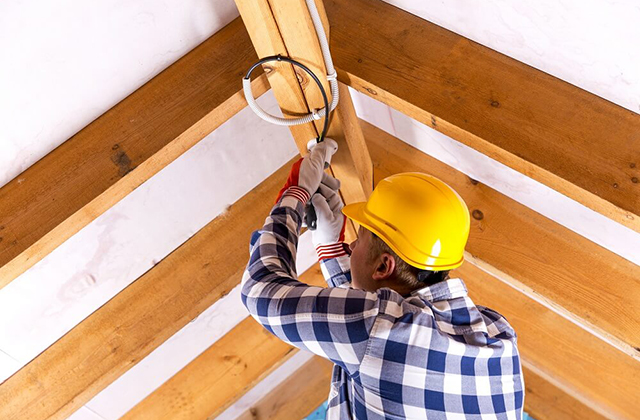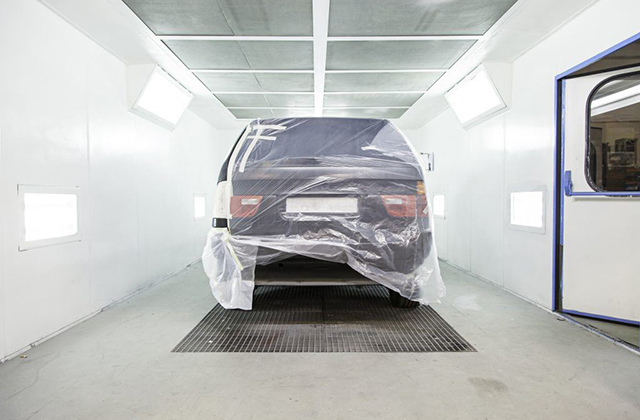Whenever you splice wires together while installing residential circuitry, the electrical code requires you to enclose the connections in a junction box. This safety measure prevents fires that can occur when the wires overheat and also protects people from getting shocked by live wires. You don’t often have to install a dedicated junction box, however, because switches, lights and receptacles are all installed in electrical boxes that can serve double-duty as enclosures for spliced wires. Here at Emergencybrisbaneelectrician.com.au our electrician Brisbane 24 hours can service any electrical need, just call us to discuss your issue.
Safety Requirement
The electrical code requires wire connections to be enclosed primarily because loose connections present a fire hazard. Even if you securely twist the wires together, screw on a wire cap and wrap the ends with electrical tape, there is still a possibility that current surges can overheat the wires. Over time, this may degrade the tape and wire caps, and insulation or framing may ignite. This degradation can also result in exposed wires, and even if they aren’t accessible enough to touch, you can still be electrocuted by driving a nail or a screw into the wall.
Electrical Boxes and Junction Boxes
Installing an electrical box is a precursor to adding any device, like a switch or receptacle, to a circuit. Boxes can be made of metal or plastic, and you usually screw or nail them to a stud or rafter, although you can anchor remodeling boxes directly to the surface of drywall. The only difference between a box for a circuit device and a junction box, or J-box, is that the latter serves no other purpose than to enclose spliced wires. Its opening is covered, not by a circuit device, but by a flat metal cover.
The Need for a Junction Box
Electricians usually minimize the number of junction boxes needed for wiring. They plan the circuitry so that they can make connections for branch circuits inside a switch or receptacle box, using a box big enough to accommodate all the wires. Careful planning usually eliminates the need for a separate J-box when wiring a room from scratch, but one or more may be necessary when adding to existing wiring. A J-box may also become necessary in other circumstances, such as when a miscalculation results in the need for splicing because of a cable that is too short to reach its destination.
Installing Junction Boxes
When upgrading the wiring for a room, you may find it necessary to tap into a wire to add a branch circuit for a light or outlet. You’ll need a junction box if you can’t make the connections inside an existing electrical box. You should install the box with the opening facing out from the wall so all the wires inside are accessible. Like any electrical box, it should be installed so that the edge of the opening is flush with the wall. Screw the cover on with machine screws so you can remove it easily.
How to Connect AWG8 Wire in Junction Box
Electrical junction boxes aren’t used just to provide convenient ways to mount receptacles, switches and light fixtures. They’re actually required by the National Electrical Code when making a wire connection. When you repair a cut in an electrical cable or splice electrical wires together, you need a junction box to protect the connections. Using a junction box also protects you from electrical shock and your home from electrical fires. Following the proper steps when making wiring connections can keep you and your family safe.
Position a screwdriver against a 3/4-inch knockout on the side of a 4-inch square metal junction box. Strike the screwdriver with a hammer to remove the knockout. Grab the knockout with pliers and twist it off the box if the screwdriver does not remove the knockout completely. Repeat the steps to remove the knockout on the opposite side of the box.
Fasten 3/4-inch clamp connectors to the 4-inch square junction box through the knockouts. The connectors thread from the outside of the box with the threads of the connectors inside. Screw the locknuts provided with the connectors onto the threads to secure the clamps to the box.
Verify there is no power present by touching the wires with a non-contact voltage tester. Push the American wire gauge 8 (AWG 8) inside the 4-inch square junction box through the 3/4-inch clamp connectors. In normal wiring applications, a circuit with AWG 8 wire includes three or four wires as a parts of 8/2 or 8/3 nonmetallic (NM) cable.
Cut the black exterior sheath off the electrical cables with a utility knife to expose the AWG 8 wires inside. Remove 3/4 inch of insulation from the wires with a pocket knife. AWG 8 wire is too large for a wire cutter/stripper.
Cut a 6-to-8-inch piece of 10 gauge solid bare copper wire to create a pigtail ground wire. The ground wire size for AWG 8 is one gauge smaller than the insulated wires. Wrap the wire clockwise around a 10/32 green ground screw inside the junction box. Tighten the screw to hold the wire inside the box, creating a ground to the junction box.
Twist the blue wire connector onto the two white AWG 8 wires inside the junction box to join them. Do not twist the two wires together before installing the wire connector. Instead, let the motion of the connector twist the wires. This makes a better wire connection and avoids a loose wire connector.
Twist another blue wire connector onto the two bare copper wires and the bare copper pigtail ground wire attached to the junction box. Twist another blue connector to the two AWG 8 black wires. If you’re working with a 240-volt circuit, use another blue connector to join the two red AWG 8 wires. Having some issues with your electrical lines? Click here!



